Intense, theatrical, demanding – Wolfgang Rihm’s string pieces inspire a raft of reactions. As the composer celebrated his 60th birthday in March 2012, David Kettle asks quartet players how they take on the challenges of his work

Discover more Featured Stories like this in The Strad Playing Hub
Think of a few composers who have written great cycles of string quartets. You’ve probably come up with Haydn, Mozart, Beethoven, Schubert, and maybe Bartók and Shostakovich. Wolfgang Rihm? He’s probably not on your list – for which you can be forgiven. Despite being one of the most respected and prolific composers around today, his music is relatively little-known, certainly in the UK and US.
But Rihm, who celebrates his 60th birthday this month, is a mighty presence as far as the string quartet is concerned. In January the great German composer was the focus of the biennial string quartet festival at Paris’s Cité de la Musique, where ensembles from around the world gathered to perform his entire output for string quartet. There are 13 numbered quartets, numerous other pieces for the ensemble, and several works for larger groups that have prominent roles for quartets, including his ‘Concerto’ for string quartet and orchestra (2000) and Et Lux (2009) for string and vocal quartets.
In fact, it was an early piece for string quartet and orchestra – Morphonie – that first made Rihm’s name, at the 1974 contemporary music festival in Donaueschingen. But what makes his pieces so enthralling is that right from the start, Rihm seemed intent on moving German music away from the cold, academic, abstract concerns of its recent past into heated emotion and vibrant expressivity. And he uses every means available to do so, exploring the strange worlds between sound and noise in his Eighth Quartet, for instance, or seeming to wallow in intense German Romanticism in his Third, or calling on his players to shout out in the Tenth.
Why has the string quartet remained so important to Rihm? It might be to do with his engagement with the past, as shown by the Mahlerian or Brucknerstyle passages that suddenly emerge from the most dissonant counterpoint in some of his pieces. He has said that for him, the term ‘string quartet’ refers to the ensemble of players rather than to a musical genre with a particular tradition, which goes some way towards explaining why it’s the place where he conducts some of his most daring musical experiments.
But although Rihm’s music is high on expression there’s no doubt that it is fearsomely difficult. What do players think of it? Here, quartet members talk about their experience of playing Rihm’s pieces, their particular challenges and what makes them so fascinating.

JONATHAN BROWN
VIOLIST, CASALS QUARTET
We’ve played two pieces by Rihm, both of them short — his Selbsthenker! in Paris, and previously his Grave: In memoriam Thomas Kakuska. They are both very emotionally direct works, and although you can see the intellectual rigour behind them, they’re not in any way abstract, cold, calculated pieces. They are hot-blooded and emotional. Grave is much more lyrical and contemplative, for obvious reasons, and Selbsthenker! is much more aggressive. It is a hyper-charged piece, both rhythmically and sonically. Rihm asks for all sorts of unconventional sounds — suddenly using the maximum pressure of bow on the bridge, for example, which produces a sound that’s beyond scratching, a really ugly sound. He’s looking for dramatic effect with these techniques. We had to learn to grit our teeth and make sounds that we’ve been trained not to enjoy, and bring out the dramatic elements. That took some getting used to.
‘We have to learn to grit our teeth and make sounds that we’ve been trained not to enjoy’ – Jonathan Brown, Casals Quartet
Selbsthenker! is almost an opera without words, where the text has been removed, but the essence of the drama is still there. This sort of theatrical aspect is important to Rihm. If you follow the instructions on the score, it’s almost impossible not to play it in a very dramatic way. It’s an enjoyable piece to work on, though. Not everything is obvious on the surface — it’s hard work, but you don’t get bored playing this music.

PETR HOLMAN
VIOLIST, ZEMLINSKY QUARTET
We’ve played two quartets by Rihm — the first was the Twelfth, which we played at the Borciani string quartet competition in 2002, and we’ve just played the Tenth at the Cité de la Musique in Paris. Rihm writes music with a very specific character that for me is sometimes quite aggressive, certainly very strong.
In the Tenth Quartet, the first and third movements are both very slow. The first movement is pizzicato throughout, and suddenly in the middle of the movement the quartet says ‘ká-ta’ — it’s not exactly clear what this means, but it might be the beginning of the word ‘catastrophe’, because the third movement is called ‘Strophe’. The third movement uses a lot of harmonics, natural and artificial, and to us it seems quite similar to Kurtág.
But the second movement, which is called ‘Battaglia/Follia’, is the most important. To reflect the ‘battaglia’ in the title, you hit the strings with the hair of the bow, battuto. Combined with that are some other sound effects — chords, harmonics, glissandos, occasionally a run in one or two of the instruments. It also quotes ‘La folia’, the famous melody from the Baroque period, and there’s also a quotation of a very simple German children’s song. Was he writing the piece when one of his kids was disturbing him? I don’t know. I also have kids and I know what it’s like to be disturbed when you’re trying to work!

LUCAS FELS
CELLIST, ARDITTI QUARTET
When Wolfgang Rihm first became famous, in the 1970s and 1980s, there was a much more intellectual approach to music, but he did something completely different. His music is very expressive. It’s an expression of everything about him — his life, his thinking, his knowledge, his interests, his loves.
I think I’ve played more than 20 pieces by Rihm, as a soloist, in ensembles and in the Arditti Quartet. I’ve played six of his numbered quartets. Technically, quite a few of his pieces are very demanding — the Twelfth Quartet, for example, or the Fifth, which we’ve just played in Paris. Very often he doesn’t indicate a tempo, but instead writes ‘as fast as possible’, and if you really want to get the right character of the music, it’s hardly playable. He makes huge demands on the performer. It’s as though the expressivity goes beyond what we’re normally capable of. Very often he has an idea about what we in the quartet can do, or could do, even if it’s something we’ve never done before. But even in his craziest music, where you might feel like you’re almost destroying your instrument, there’s always something very convincing about it. As a player, you immediately know how to play it.
The Third Quartet is famous because of its almost Mahlerian sound and the Romantic elements that he uses in the piece. In a way he’s always referring to the repertoire of the past. It’s as though he is saying he’s part of the past — there’s a part of him that’s a typical German Romantic.
His latest quartet, which we’ve just premiered, is a great piece. It has enormous drive and is very demanding. His music is really enjoyable to play. I find there’s music that I think is fantastic but isn’t a pleasure to play, and there’s lots of music that I love to play, though I know it isn’t too interesting in itself. But Rihm’s music really has both sides — it’s great to play and is great music.
Read: Violist to depart Casals Quartet after 22 years
Read: Book review: Collaborations: Reflections on 50 Years of Working with Composers

PIERRE MORLET
CELLIST, DIOTIMA QUARTET
Rihm’s quartets are such different pieces. We recently played the First Quartet for the fi rst time, and we’ve played the Eighth Quartet several times. The First Quartet, written in 1970 is still a student piece. It has a surprise at the end — there is a long silence very near the finish, and just before it there are some ppp bars with one tremolo and just two or three notes from the first violin. It’s as if the music has been destroyed. This is because one of Rihm’s teachers at the time told him it wasn’t possible to write a string quartet in the 1970s, so Rihm decided not to write a proper conclusion to this quartet. It’s like he’s interpreting the words of his teacher by killing the quartet.
After we sightread through the piece we wondered why it had this kind of ending. When we found out, we decided to think of the piece as a single gesture, as though there’s an arrow from the start right through to those final bars. You have to take the listener from the beginning, through those bars and beyond them.
’The Eighth Quartet is about the noise inside the music — but it feels almost jokey’ – Pierre Morlet, Diotima Quartet
The Eighth Quartet is a very different piece. It contrasts noise and sound — it’s about the noise inside the music. But it feels almost jokey. For example, you have to take a piece of paper and make noises with it, by dropping it on the floor, showing it to the audience, scratching it and so on. You also have to ‘write’ the words ‘con amore’ with your bow on your part on the music stand. We know Rihm fairly well: we’ve met him quite a few times and he knows the quartet. If he’s in the audience, you’ll definitely see him, as he is very distinctive. That’s quite important — he’s not a discreet person. So with these theatrical elements in the piece, I’m sure you have to do them as written, not discreetly. They’re things for the audience to watch, as well as listen to.
Rihm’s music is definitely not abstract. There’s always a story, even if it’s not a story in the literal sense, with characters and narrative. But there’s always something behind his music. Generally speaking, Rihm’s music isn’t about new techniques or challenging writing — it is fine, delicate music that’s very well crafted. I enjoy playing it, probably because it isn’t too complex, so it’s possible to get pleasure from it without having to think too much about what you’re doing all the time.
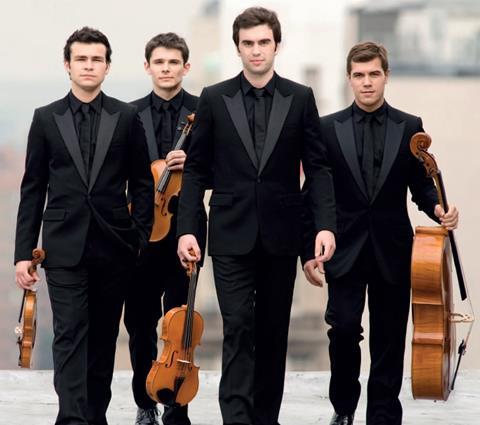
LOÏC RIO
VIOLINIST, MODIGLIANI QUARTET
It’s interesting to play Rihm’s very early quartets because they’re by such a young composer. We’ve played his String Quartet in G minor (1966) and String Quartet (1968), which were written before his first ‘official’ quartet. On our next CD, we have music by Schubert, Mozart and Arriaga written when they were just teenagers. So we thought, why not do the same with contemporary music and play quartets by the teenage Rihm?
The music is quite inspired by Bartók, and sometimes it sounds like something from the Second Viennese School. The 1966 Quartet is still quite basic in the way it’s composed. It is in a single movement, with an arch-like structure. The later quartet is in four movements, so it has quite a classical form.
‘Even in the very early pieces, you can see clearly that they’re written idiomatically for strings’ – Loïc Rio, Modigliani Quartet
Even in these very early pieces, though, you can see clearly that they’re written idiomatically for strings. Sometimes you see a score of a new piece and think it’s written for computer, not for string players. But you can always clearly see what Rihm wants, and that shows you the way you have to work on the music.

CÉCILE ROUBIN
VIOLINIST, VOCE QUARTET
We’ve played two quartets by Rihm — the Second and Eleventh. Rihm wrote the Second Quartet when he was just 18, in 1970. It’s quite an experimental piece, and it’s very short. He seems to want the performers to play freely, because he doesn’t mark any bar-lines, but he uses arrows to indicate when things have to be together. He seems to be saying that we are free and can do what we want, but we often have to come together again — it’s like he wants it both ways!
The Eleventh Quartet is very different. It’s long — half an hour, and in a single movement. As performers we’ve divided it into four ‘movements’ because it’s easier to rehearse it that way. It’s precisely written, with a lot of indications for every note — it’s classical in that sense. There’s also the sense that Rihm is using every voice: it’s never the same person who has the most important part. Sometimes you don’t know where the main focus of the music is coming from.
We used the score when we were rehearsing, and we looked at it precisely to work out what was the most important part at each point. At first, we didn’t exactly understand what the composer wanted or how the piece worked, but then we began to understand that he saw the quartet as one instrument — that we should be come one instrument, and that every part is equally important.
It’s a challenge to play his pieces: you have to feel the music in order to express it to the audience. It’s important to highlight its expressiveness. Also, for us it’s tiring. The Eleventh Quartet is intense all the way through, even in the slower or quieter parts, and it’s important to communicate that. But it’s also exciting because there’s a moment when you start to feel like you truly know the piece, when you really feel inside the music.
Read: ‘We see playing with others as an important means of nourishment’ - Modigliani Quartet
Read: The Brodsky Quartet: how we prepare our Shostakovich string quartet cycle
Discover more Featured Stories like this in The Strad Playing Hub
The number one source for playing and teaching books, guides, CDs, calendars and back issues of the magazine.
In The Best of Technique you’ll discover the top playing tips of the world’s leading string players and teachers. It’s packed full of exercises for students, plus examples from the standard repertoire to show you how to integrate the technique into your playing.
The Strad’s Masterclass series brings together the finest string players with some of the greatest string works ever written. Always one of our most popular sections, Masterclass has been an invaluable aid to aspiring soloists, chamber musicians and string teachers since the 1990s.
American collector David L. Fulton amassed one of the 20th century’s finest collections of stringed instruments. This year’s calendar pays tribute to some of these priceless treasures, including Yehudi Menuhin’s celebrated ‘Lord Wilton’ Guarneri, the Carlo Bergonzi once played by Fritz Kreisler, and four instruments by Antonio Stradivari.






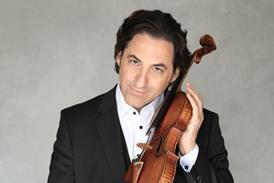
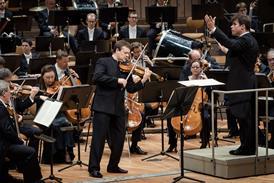




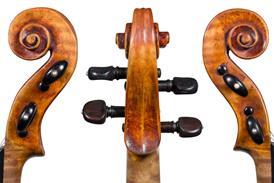


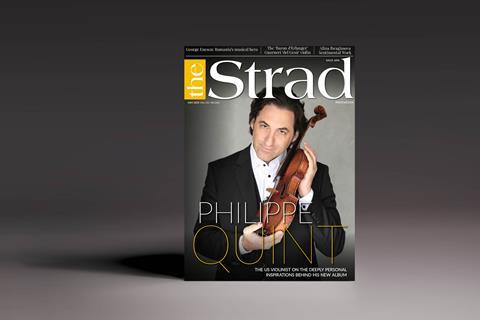









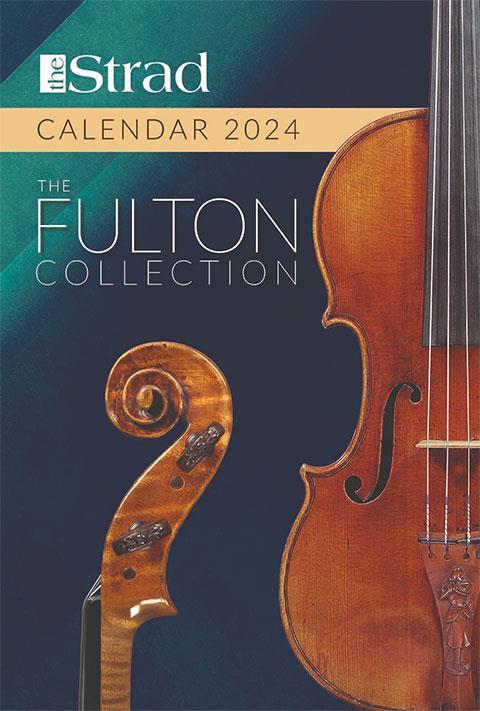












No comments yet